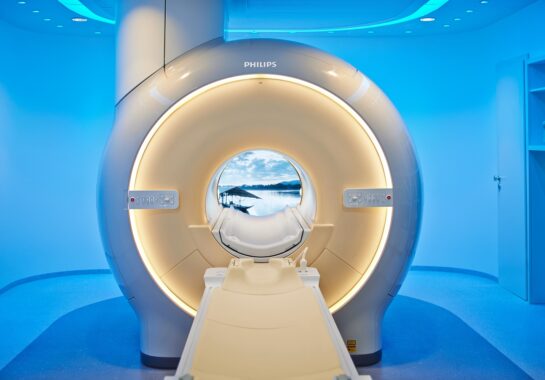What is an MRI scan?
MRI stands for Magnetic Resonance Imaging and works by using a magnetic field and radio waves to create images of the inside of the body.
An MRI scan utilises a strong magnetic field; therefore, it’s essential to remove any metal objects from the body or pockets before entering the scanning room.
MRI scans take longer than other scans, but the patient can watch a film or listen to music to help them relax.
If a child is too young or unwell to be able to lie still during an MRI scan, they may need a general anaesthetic.
How is an MRI scan carried out?
Before the scan, the radiographer will ask you to complete an MRI safety questionnaire and will discuss the scan with you.
The scan involves the patient lying on a bed with a frame around them – this does not touch them. They are then moved into the magnetic area, which looks like a large tube.
The patient will not feel anything, but the magnet is noisy, so we will provide headphones, allowing them to listen to music of their choice during the scan.
They will not need to undress but will be asked to remove any metal objects which are magnetic, such as watches or jewellery. The patient will be able to speak with the radiographer during the scan if they feel uncomfortable, but they will need to remain still.
Once the scan is completed, a qualified doctor will review the scan images and provide a report to the referring doctor.
What types of MRI scans are available?
MRI scans are effective at showing the brain, spinal cord and nerves, as well as muscles, ligaments, and tendons, much more clearly than X-rays or CT scans.
Below are some of the most common types of MRI scans we perform.
